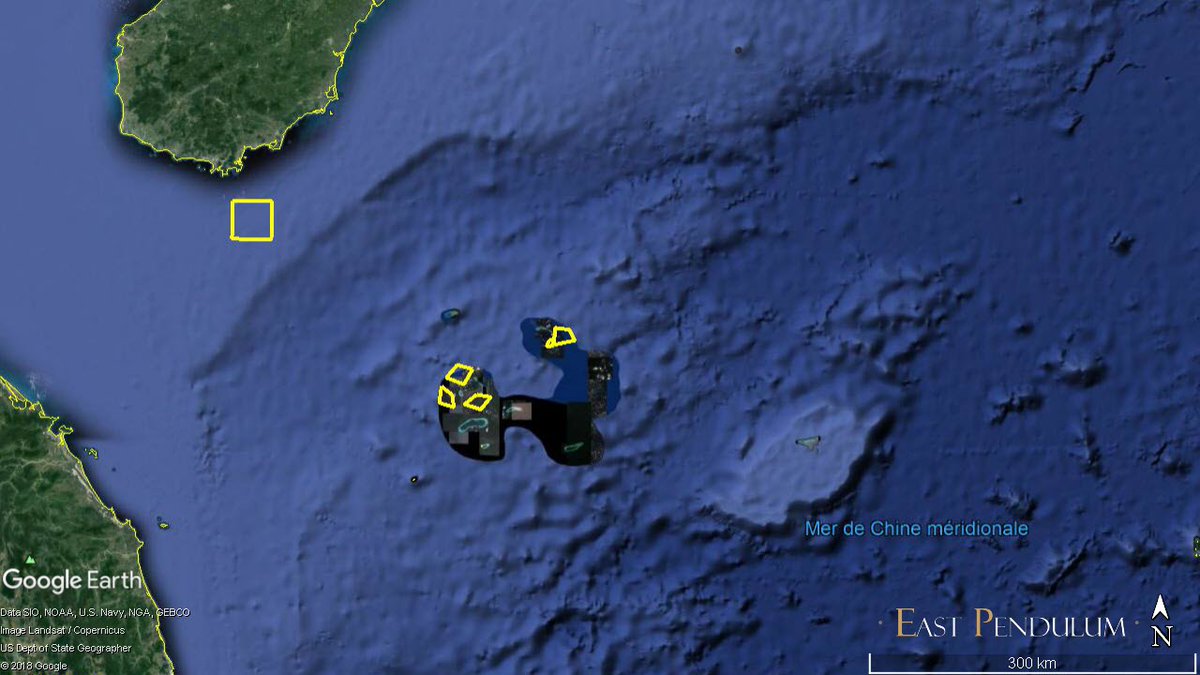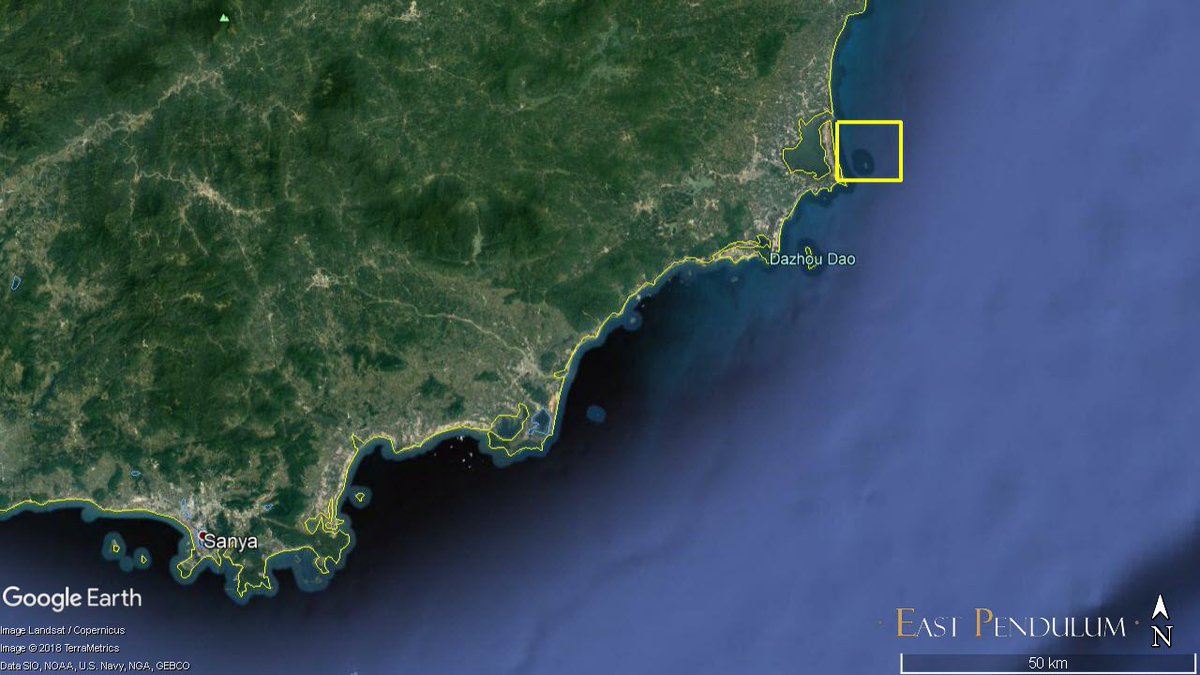From defense news. Interesting graphic that show the reach of AD. If this news is true it give China a n air defense screen over the whole SCS. I am waiting for deployment of J11B and KJ 500 We probably does not have to wait for long
Find an old article about YJ 12 It is fearsome missile some excerpt For full article here is the link
How far can China’s long-range missiles reach in the South China Sea?
By:
2 hours ago
over the region and further complicate the movement of American military assets through the area, according to an Asian maritime security expert.
Collin Koh, a research fellow at the Maritime Security Programme at Singapore’s S. Rajaratnam School of International Studies, also called the deployment yet another indication that China is serious about ramping up activities on the disputed Spratly Islands.
He said he expects to see the future
like fighter jets and bombers to the air bases there, in time to come as part of China’s strategy of creeping control in the strategic waters.
CNBC reported earlier this week that
had quietly deployed HQ-9 surface-to-air missiles and YJ-12 supersonic anti-ship missiles onto its outposts in the South China Sea in the past month, quoting anonymous sources with direct knowledge of U.S. intelligence reports. They did not specify on which of the Chinese-held islands the missiles were placed.
The reported deployments come in the wake of a Wall Street Journal report last month that the Chinese military was using electronic warfare equipment placed on the islands to jam U.S. Navy aircraft operating over international airspace in the South China Sea.
Taiwan’s Defense Ministry has sought to downplay the drill, saying China is exaggerating the scale of the activity to create anxiety among Taiwanese.
By: Gillian Wong
Koh told Defense News that the presence of the missiles, with a reported range of 160 and 295 nautical miles respectively, signifies that China regards the artificial islands as strategically high-value installations and merits the allocation of such resources for protection. The islands were built with sand dredged from the seabed. They are now host to airfields, military installations, supporting infrastructure and ship-berthing spaces.
CNBC has called the missiles “defensive” in nature. However, in practice they will also allow China to engage targets far into the surrounding airspace and waters, which includes features held by the other claimants.
The Chinese-built HQ-9 is based on the Russian S-300 air defense system, although its derivatives have been improved over the years by China. It is used for long-range air defense of strategic targets, and the deployment of this system in the Spratly Islands potentially gives China the ability to target aircraft over the whole island group.
The range of the HQ-9 surface-to-air missile. (Google)
In the case of the YJ-12, it also theoretically allows China to interdict shipping in an arc stretching from the coast off central Vietnam, to eastern Malaysia’s Sabah state and the Philippines’ Palawan Island if deployed on the island province of Hainan and Chinese-controlled islands in the Paracels and Spratlys, as the accompanying graphic in this article shows.
The range of the YJ-12 supersonic anti-ship missile. (Google)
However, Koh does not expect the news of the missile deployments, which appear to fly in the face of previous Chinese pledges not to “militarize” the South China Sea, to generate much protest from regional countries or rival claimants. Any pushback from the region is unlikely to stop China from pursuing similar behavior, he added, or even upping the ante in the future.
“What China is doing now is precisely what gray zone or short-of-war strategies is about: Keeping its actions below the threshold of red lines that could lead to hostilities, while making calculated gambles to present fait accompli against its rivals”.
The missiles would also enable China to complicate peacetime operations and movement of American warplanes and warships traversing the area, including those carrying out so-called freedom of navigation operations, essentially extending China’s
“bubble” out from the Chinese mainland into the South China Sea.
Newly appointed commander of U.S. Pacific Command Adm. Philip Davidson, who was only confirmed by the Senate last week,
that to ensure regional security, “U.S. operations in the South China Sea — to include freedom of navigation operations — must remain regular and routine.” Yet he acknowledged that advances in Chinese military means Pacific Command needs to invest in increased resiliency in its forward-deployed force posture.
Find an old article about YJ 12 It is fearsome missile some excerpt For full article here is the link
CHINA’S MOST DANGEROUS MISSILE (SO FAR)
JULY 2, 2014
Buried on page 40 of the Pentagon’s
on China’s military power is a brief mention of the YJ-12, a recent addition to China’s portfolio of anti-ship cruise missiles (ASCM). The report notes that, “The new missile provides an increased threat to naval assets, due to its long range and supersonic speeds.” True, but in an understated way. In fact, the YJ-12 is the most dangerous anti-ship missile China has produced thus far, posing an even greater risk to the U.S. Navy’s surface forces in the Western Pacific than the much-discussed DF-21D anti-ship ballistic missile. The arrival of the YJ-12 is one more indication of how the U.S. Navy is falling further behind in the missile competition against China, exposing flaws in operating concepts that U.S. and allied commanders and policymakers have relied on for years.

/arc-anglerfish-arc2-prod-mco.s3.amazonaws.com/public/E7CXFVQ6EZFU3LX6C6FUHMIQAE.jpg)
/arc-anglerfish-arc2-prod-mco.s3.amazonaws.com/public/RTMGQNSEM5FOBPOUKJHH65TFEQ.jpg)


